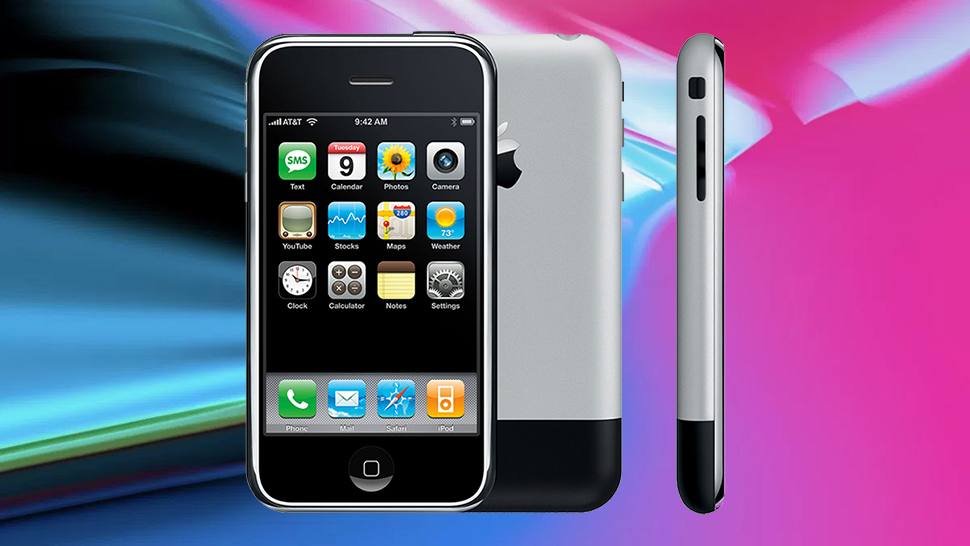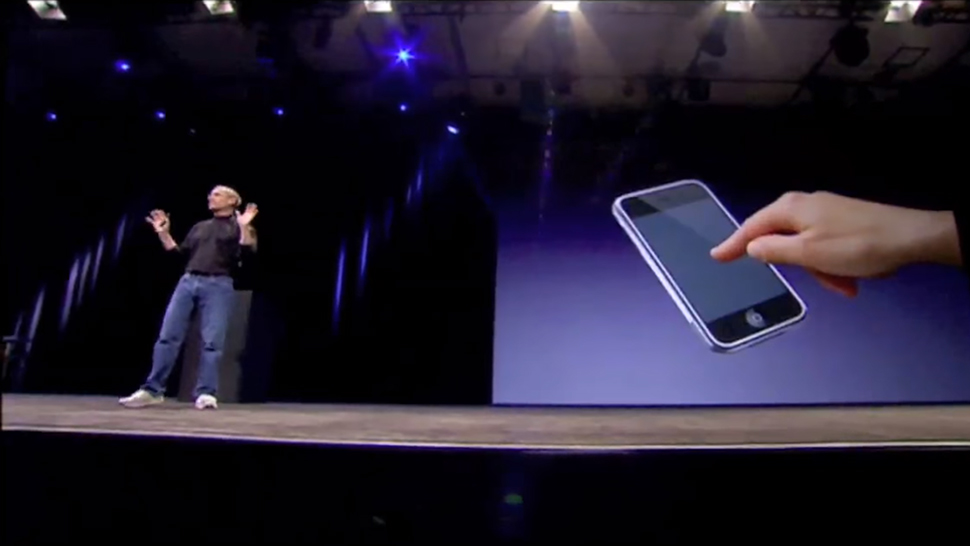Remember this? Here's everything that the first iPhone couldn't do
2007 was a long time ago


Everything was different in 2007: people listened to music on iPods, the final Harry Potter book came out, and if you wanted a top-of-the-range phone then it was going to come with a physical keyboard. Then, Apple launched the iPhone, and everything changed.
It's easy to forget, though, that this change didn't happen overnight. Not everyone was convinced by the new touchscreen approach, or by browsing the web on a phone, and the very first Apple iPhone had quite a few limitations, some of which we've listed below.
Of course we're still huge fans of the iPhone, no matter which model we're talking about - but it's worth remembering that it wasn't quite perfect right from day one, and the phone's rise to prominence took a few more iterations than you might have thought.
Don't forget to check out our full history of the iPhone
Install apps
The first iPhone only ran Apple software: no Snapchat, no Facebook, no Gmail. It wasn't until the year after that Apple developed the framework necessary for third-party developers to get involved, and it was then that the smartphone era really began.
Make 3G calls
To begin with, iPhones could only connect to 2G and 2.5G networks, as they were known then - that meant very limited browsing away from a Wi-Fi connection. The second iPhone, launched the following year, was called the iPhone 3G to flag up its faster data speeds.
Copy and paste
This was quite a big bugbear for early iPhone users: the fact that you couldn't copy one bit of text from one part of the screen and paste it on another. It wouldn't be until two years later, in June 2009, before iPhone owners could start copying and pasting on their devices.
Get all the latest news, reviews, deals and buying guides on gorgeous tech, home and active products from the T3 experts

Change the wallpaper
It's quite a small feature, and often forgotten, but the very first iPhone had one fixed wallpaper - that blue globe picture. Even then the image was only allowed on the lock screen, and behind your row of app icons there was nothing but an empty black space.
Send MMS messages
No one really bothers with Multimedia Messages (MMS) in the age of WhatsApp and Facebook, but in 2007 a lack of MMS support was quite a big deal - and if you owned the first iPhone, then you were stuck on plain old text messages to get your point across.
Expand its storage space
We're now pretty much used to the iPhone not having expandable memory, but it was quite a notable move at the time, especially as the cheapest model had just 4GB of on-board storage. This is one of those omissions Apple hasn't seen fit to fix just yet.
Run Flash on the web
Another one of those big-for-2007 decisions, but Apple has been vindicated here, with Flash now all but dead. Back when the iPhone first appeared though, much of the interactive web relied on Adobe Flash, and its absence was seen as a problem by some.
Record video
Our phones might be fully fledged movie-making studios in 2017, but the original iPhone couldn't shoot video - only photos. To be fair to Apple, this was still early days for mobile phone photography, but some of its cheaper rivals (like the Nokia N95) could shoot video.

Shoot selfies
Back in 2007, selfies weren't really a thing - and nor was FaceTime, and nor were front-facing cameras, which the first iPhone didn't have (and the Nokia N95 did...). If you wanted a photo of yourself, you had to go to the effort of turning your phone around.
Get a GPS lock
The first iPhone didn't have a GPS chip, though it could try and roughly work out where you were based on cell towers and Wi-Fi data using something called Skyhook, which Apple later replaced. It carried a rudimentary version of Google Maps, made by Apple using Google data, that according to tech lore was hobbled together in three weeks.
And those specs...
While we're casting our minds back through history, we might as well recap all of the iPhone's specs for you. The screen stretched a mere 3.5 inches from corner to corner, carrying a resolution of 320 x 840 pixels - you could fit 15 of them in the iPhone X display.
A single-core 620MHz Samsung CPU was backed by 128MB of RAM and the phone came rocking a 1,400mAh battery. As for that all-important rear-facing camera, it boasted a 2.0 megapixel resolution, and you got a USB port and a 3.5mm audio port thrown in too.
- Still an Apple fan? 10 years on we have the iPhone X
Dave has over 20 years' experience in the tech journalism industry, covering hardware and software across mobile, computing, smart home, home entertainment, wearables, gaming and the web – you can find his writing online, in print, and even in the occasional scientific paper, across major tech titles like T3, TechRadar, Gizmodo and Wired. Outside of work, he enjoys long walks in the countryside, skiing down mountains, watching football matches (as long as his team is winning) and keeping up with the latest movies.
